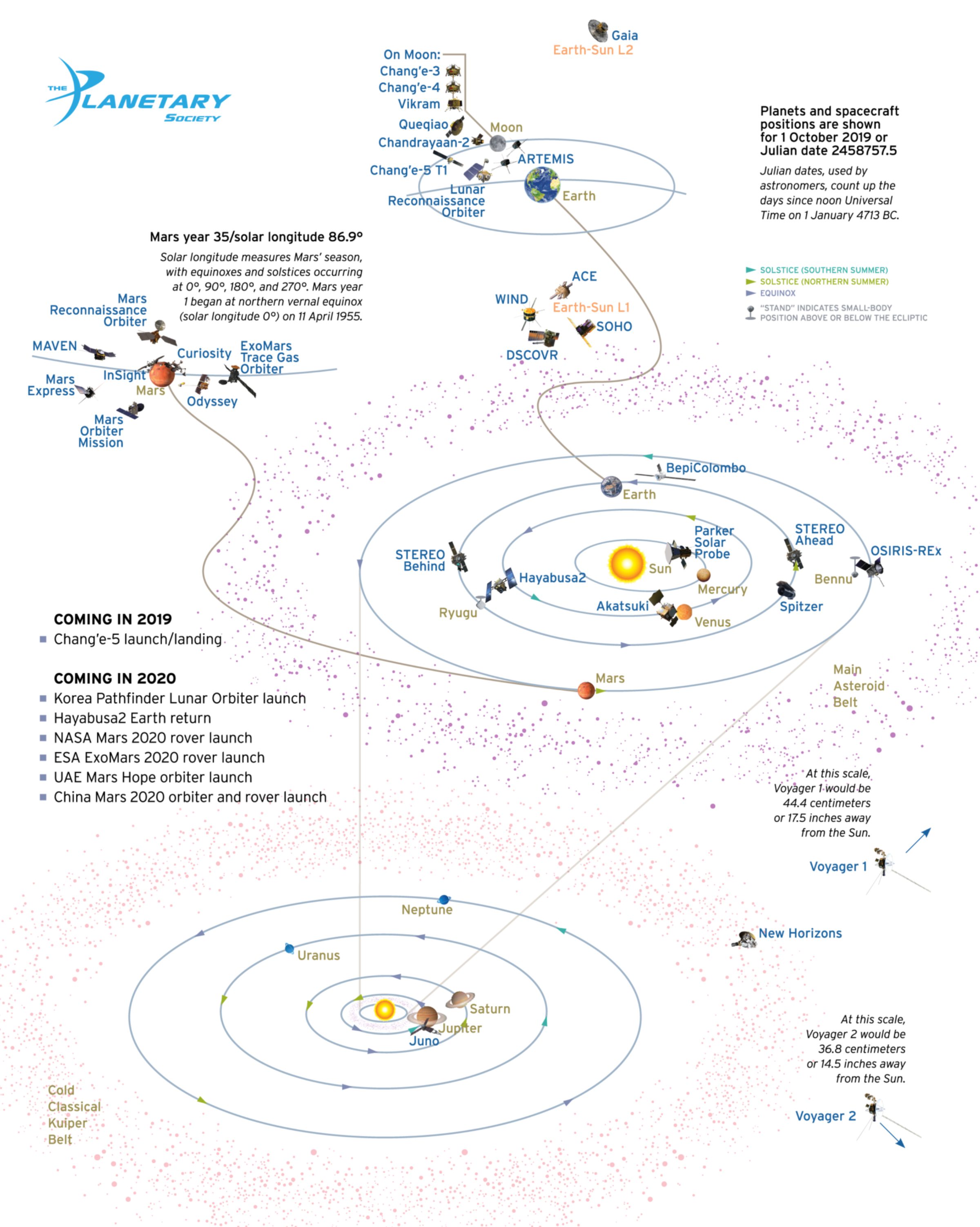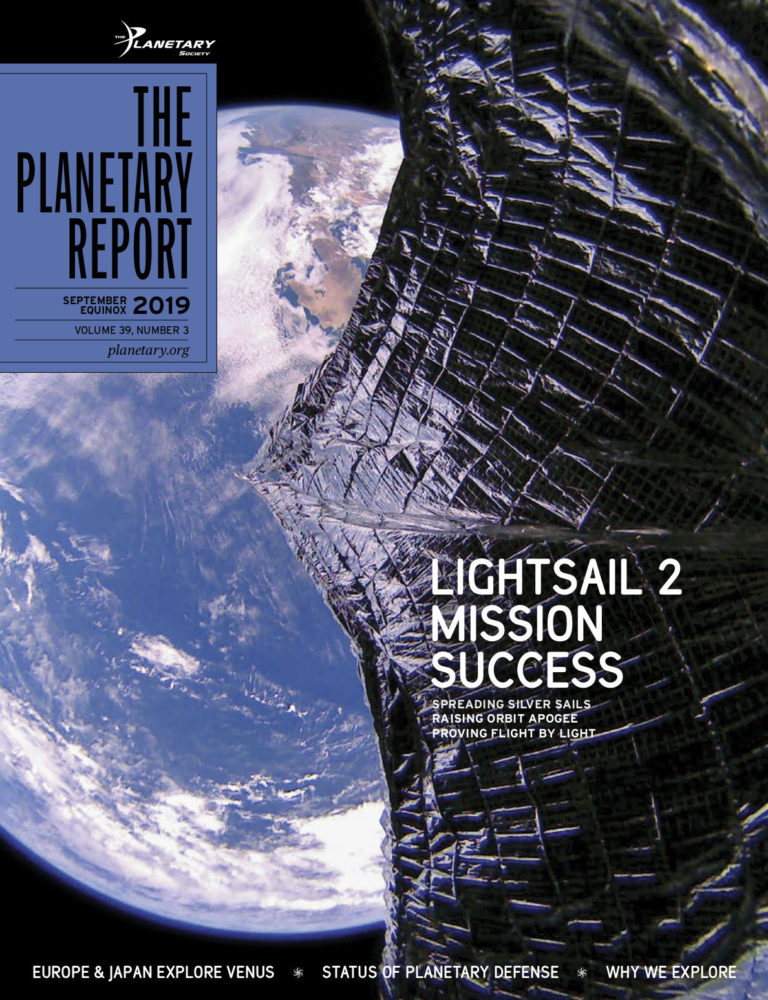Where We Are on 1 October 2019
An At-A-Glance Spacecraft Locator
We lost and gained spacecraft at the Moon last quarter. India’s Chandrayaan-2 left Earth orbit for the Moon on 13 August, and its Vikram lander aims at a 7 September touchdown. I’ve optimistically sited it on the ground on the diagram to the right. Lunar Reconnaissance Orbiter just celebrated its tenth launch anniversary. China’s smallsat Longjiang-2 crashed on 31 July, ending its successful mission.
Parker Solar Probe is racing away from perihelion number 3, which it passed on 1 September, and will fly by Venus for its second time on 26 December. The Spitzer Space Telescope, advancing ahead of Earth in its orbit, is nearing the end of its mission; it will be shut down on 30 January.
Asteroid Ryugu is near perihelion, which takes it closer to the Sun than Earth. The asteroid is too warm for Hayabusa2 to do any further touchdown activities. Late this quarter, Hayabusa2 will begin its journey home.
At Mars, it’s near northern summer solstice; the Mars Express Visual Monitoring Camera views of the planet show a fully lit northern polar cap. InSight’s engineers are still working to get the heat probe embedded in the sand. Seven years after landing, Curiosity saw its odometer turn over to 21 kilometers (16 miles) while crossing clay-rich rocks on Mount Sharp.

At Jupiter, Juno has 2 close approaches to Jupiter on 3 November and 26 December. In the Kuiper belt, New Horizons is doing distant science on Kuiper belt objects, Uranus, and Neptune.
At a reader’s request, I’ve added numbers describing how far off the printed diagram Voyager 1 and 2 would actually be. It’s far!
Support our core enterprises
Your support powers our mission to explore worlds, find life, and defend Earth. You make all the difference when you make a gift. Give today!
DonateThe Planetary Report • September Equinox
Help advance space science and exploration! Become a member of The Planetary Society and you'll receive the full PDF and print versions of The Planetary Report.


 Explore Worlds
Explore Worlds Find Life
Find Life Defend Earth
Defend Earth


